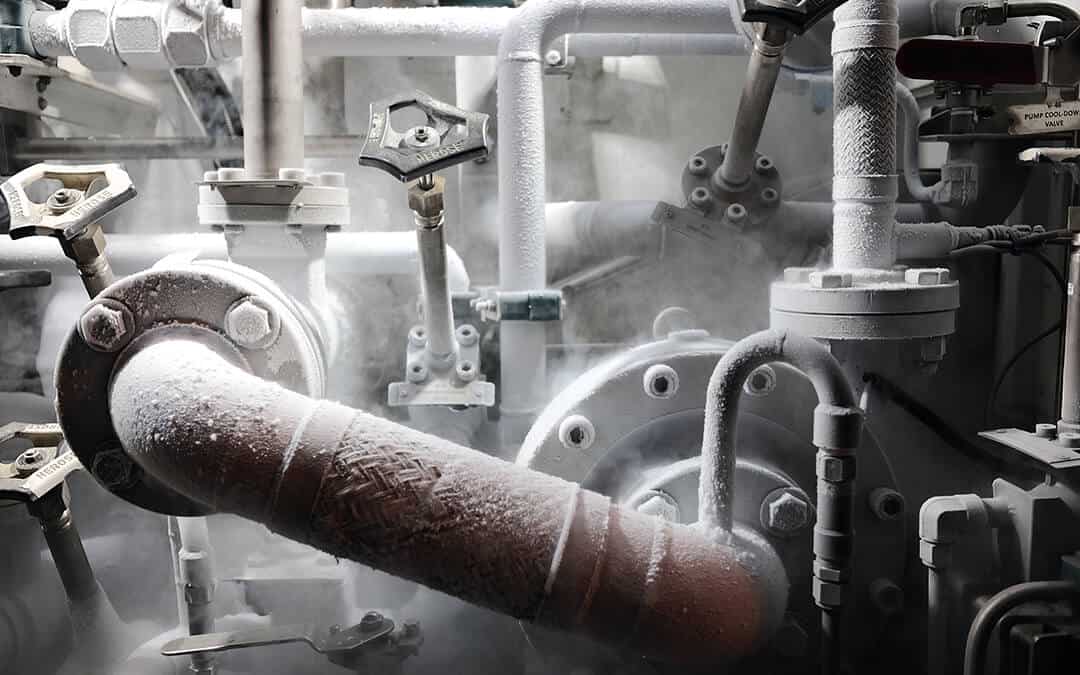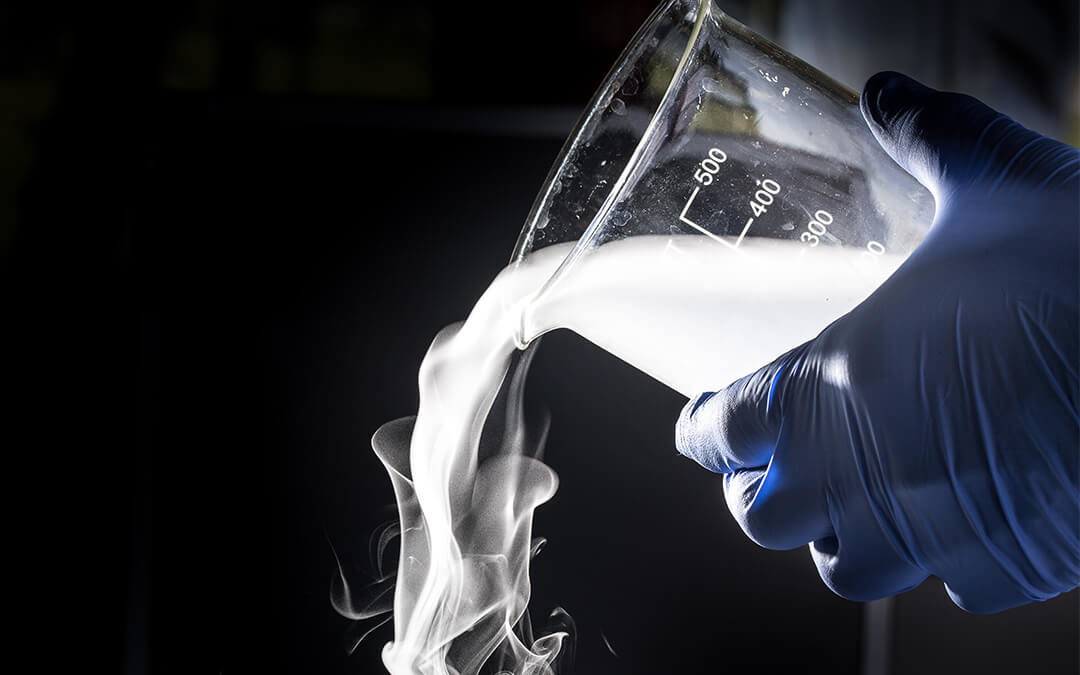As an essential component of life on Earth, nitrogen is found in all living systems. Nitrogen can be found in organic materials, foods, and more. Named after the Greek word nitron, for “native soda,” and genes for “forming,” nitrogen is the fifth most abundant element in the universe. Nitrogen also happens to be the largest-volume inorganic chemical sold in the world, capable of supporting a multitude of applications from food freezing to metal treating and beyond. With its wide availability and flexible applications, liquid nitrogen has become one of the most popular cryogenic liquids around. Here are the top five things to know about this cool (pun intended) liquid gas:
1. It won’t kill you (mostly).
Odorless, colorless, and non-toxic liquid nitrogen is generally safe for use. But while it’s non-irritating, that doesn’t mean you can just use it without any precautions. Adding large quantities of nitrogen to the air reduces the amount of oxygen, which creates an asphyxiation risk. Excessive inhalation of nitrogen can also cause dizziness, nausea, vomiting, loss of consciousness, and eventually death. So be sure to always use liquid nitrogen in a well-ventilated area.
2. It’s in the air we breathe.
Nitrogen is 75% of the air we breathe. The remainder of the air in Earth’s atmosphere is made up of approximately 21% oxygen and small amounts of other gases, such as carbon dioxide, neon and hydrogen. And although it’s a major component of air, nitrogen is not capable of supporting life on its own.
3. It’s COLD.

Liquid nitrogen is a cryogenic liquid, meaning it boils at 77 K (−195.8° C or −320.4° F). This means liquid nitrogen is cold enough to cause severe frostbite almost immediately if it comes into contact with skin. And while its super-low temperature might seem dangerous, it also makes it ideal for applications such as refrigeration. Liquid nitrogen is often used to store sperm, eggs, and other cells used in medical research or fertility clinics. However, to avoid damage and injuries, always wear proper safety gear when handling liquid nitrogen.
4. Special storage is required.
Because of its extremely cold temperature, liquid nitrogen must be stored in special insulated containers. Liquid nitrogen is often stored, shipped, and handled in containers called dewars. Dewars are portable, double-walled containers that are open-necked, free-venting, and vented to prevent pressure buildup. Depending on the design of the Dewar flask, liquid nitrogen can be stored for hours or for up to a few weeks. However, liquid nitrogen should only be stored in well-ventilated areas to avoid overpressurization.
5. You can eat it!

The culinary use of liquid nitrogen was first mentioned in an 1890 recipe book titled Fancy Ices by Agnes Marshall (looks like she was onto something!). Since then, liquid nitrogen has been brought into the present day by restaurants in the preparation of ice cream, fun cocktails, and innovative food. Liquid nitrogen allows normally long cooking processes to be created within moments of the speed at which it cools food. In ice cream, the rapidity of chilling leads to the formation of smaller ice crystals, which provides the dessert with a smoother texture. In the preparation of cocktails, liquid nitrogen can be used to quickly chill glasses or freeze ingredients. Liquid nitrogen can also be added to drinks to create a smoky effect. If you’re interested in a liquid nitrogen cocktail, the Barton G in Los Angeles serves up drinks with a nitrogen twist.
With its applications ranging from specialty ice cream shops and cocktails to medical practices and beyond, liquid nitrogen looks like it’s here to stay. But with such a cold substance comes specific requirements for safe storage, handling, and usage. At CalOx, we specialize in liquid nitrogen, from regular deliveries to storage, delivery, and handling equipment, along with training and maintenance. Contact us to buy liquid nitrogen in the greater Los Angeles region!
Sources:
https://www.thoughtco.com/liquid-nitrogen-facts-608504
https://en.wikipedia.org/wiki/Liquid_nitrogen#Uses
